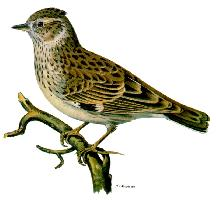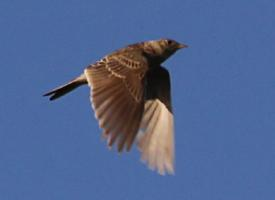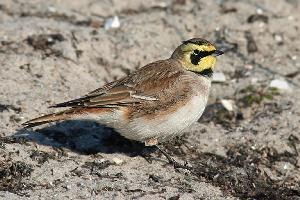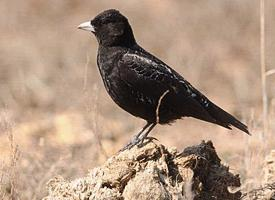
Description de l'animal
The Woodlark (Lullula arborea) is a small, enchanting passerine bird that belongs to the lark family, Alaudidae. This bird is particularly notable for its melodious song and distinctive physical characteristics, making it a subject of fascination among birdwatchers and ornithologists. The Woodlark has a wide range across Europe and parts of Asia, inhabiting open landscapes such as heathland, grassland, and clearings within forests.One of the most striking features of the Woodlark is its size and appearance. It measures approximately 15 cm in length, with a wingspan of around 25 to 30 cm, and weighs between 15 to 25 grams. The bird exhibits a rather compact and robust body, with a short tail and relatively long legs, adapted for both walking and running on the ground. The plumage is predominantly brown, with a distinctive pattern of streaks and spots that provide excellent camouflage against the forest floor and underbrush.
The Woodlark's head bears a conspicuous pale supercilium (eyebrow) that contrasts with its darker crown, adding to its distinctive appearance. Its cheeks and underparts are paler, often showing a hint of yellow or buff. One of the most remarkable features of the Woodlark is its crest, which it can raise or lower depending on its mood and social interactions.
The Woodlark's song is a defining characteristic, often described as a melodious, fluting series of notes that can be heard throughout the year, but most prominently during the breeding season in spring and early summer. The bird's song is a vital component of its mating rituals and territory defense. Male Woodlarks perform a captivating display flight, rising vertically into the air before circling and descending, all the while singing their intricate melodies to attract females and deter rivals.
In terms of behavior, Woodlarks are ground feeders, primarily consuming a diet of insects, seeds, and other small invertebrates. Their foraging technique involves walking and running on the ground, using their keen eyesight to spot food items. During the breeding season, Woodlarks become more territorial, with males vigorously defending their chosen nesting sites. Nests are typically constructed on the ground, hidden among vegetation, where the female lays a clutch of 3 to 5 eggs. Both parents participate in feeding and caring for the chicks until they are ready to fledge.
The Woodlark's habitat preferences include open, sandy areas with sparse vegetation, where it can find both food and suitable nesting sites. However, due to habitat loss and fragmentation, the populations of Woodlarks have faced challenges in some parts of their range. Conservation efforts are crucial to ensure the preservation of their habitats, enabling these melodious birds to continue thriving.
In summary, the Woodlark (Lullula arborea) is a captivating bird species, admired for its beautiful song, distinctive appearance, and fascinating behaviors. As a symbol of wild, open landscapes, the Woodlark holds a special place in the natural heritage of the regions it inhabits, reminding us of the importance of conserving natural habitats for the future.
Animaux similaires
Nouvelles photos d'animaux
Top 10 des animaux
- Dolphin gull (Leucophaeus scoresbii)
- Diana monkey (Cercopithecus diana)
- Moustached guenon (Cercopithecus cephus)
- Galápagos tortoise (Geochelone nigra complex)
- Russian tortoise (Testudo horsfieldii)
- Stone loach (Barbatula barbatula)
- Japanese macaque (Macaca fuscata)
- Greek tortoise (Testudo graeca)
- Common flying dragon (Draco volans)
- Vendace (Coregonus albula)


